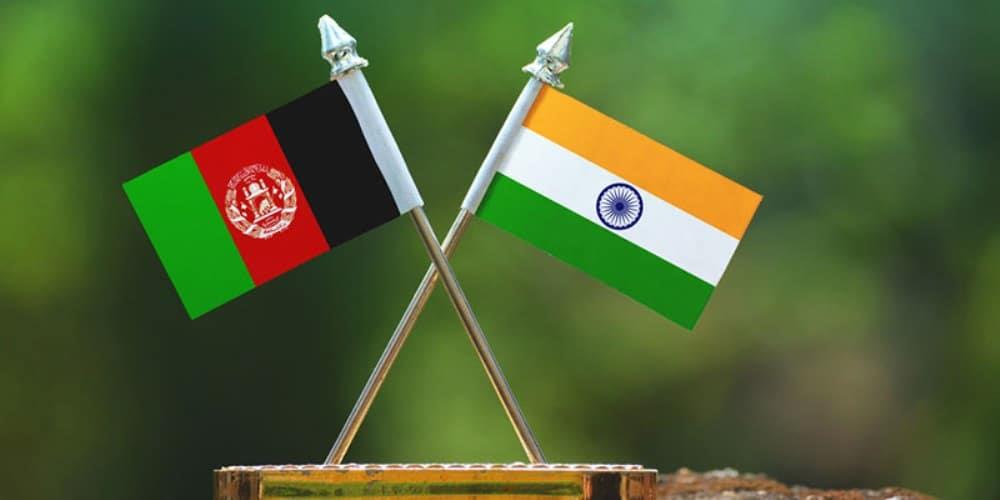
Op-Ed: India Looking Forward To A Long-Lasting Cooperation With Afghanistan
India has earmarked USD 26.7 million to Afghanistan, keeping a continuing focus on its people, without recognizing, like the rest of the world community, the Taliban regime.
The sum allocated in India's Annual Budget for the year April 2022-March 2023 is less compared to USD 47.6 million of 2021-22, which can be easily explained by the lack of formal ties, especially the economic relations since the Taliban took control last August.
Like the world community, India seeks an inclusive government in Afghanistan that allows a role for women and for the ethnic minorities, besides freedom for girls to study and women to work. Taliban have so far not heeded to the global appeal.
India responded to a global appeal for medicine last December and flew two tons of aid, a gesture that was appreciated by the Taliban with the hope for continued medical supplies.
However, India and Afghanistan have not been that lucky on economic aid. After protracted modalities worked out with Pakistan, India this month is expected to send the much-awaited aid of wheat. However, delays have been caused by Pakistan's refusal to allow the use of its territory for India to reach a landlocked Afghanistan.
Pakistan blocks India's access on the ground that it would amount to allowing India to reap economic benefits from Afghanistan, even as the latter vigorously campaigns for humanitarian aid reaching Afghanistan. The impasse was broken when Acting Afghan Foreign Minister Amir Khan Muttaqi visited Islamabad and personally appealed to Prime Minister Imran Khan.
To get around this obstacle, Iran has offered to facilitate the movement of Indian aid via Chabahar port. The jointly developed port also receives fund allocation in the Annual Budget.
Some years back, Pakistan had blocked Indian-supplied biscuits to the malnourished Afghan children readied in response to a United Nations appeal. The consignment rotted on the India-Pakistan border and had to be destroyed.
India's role in Afghanistan has been dictated by the volatile conditions in that country for the last five decades and by the obstacles from Pakistan that lie between the two. It had burgeoning ties during the monarchy and even through the 1980s when the country was ruled by Soviet-backed regimes.
Since 2001 after the US invasion, India had emerged as Afghanistan's biggest aid supporter in the region investing USD three billion in numerous mega infrastructure projects.
Afghanistan has been a steady recipient of India's grants over the last two decades and the Government of President Ashraf Ghani last year received around ₹348 crores (USD 46 million). India has showcased its assistance to Afghanistan as aid-oriented, which is focused on development projects on the ground.
Shaida Mohammad Abdali, Afghanistan's ambassador to India, in April 2017 pointed out that India“is the biggest regional donor to Afghanistan and fifth-largest donor globally with over $3 billion in assistance. India has built over 200 public and private schools, sponsors over 1,000 scholarships, hosts over 16,000 Afghan students.”
Relations between Afghanistan and India received a major boost in 2011 with the signing of a strategic partnership agreement. It was Afghanistan's first since the Soviet invasion of 1979 and was before one was signed with the United States.
India sought to expand its economic presence in Afghanistan through 2002- 2021 and thus, earned considerable goodwill among the Afghan people. A number of farm production and irrigation schemes, help to medium and small industries, and IT centers across the country came upon the ground.
India also helped Afghanistan to improve transport connectivity and economic collaboration with countries in Central and South Asia. It had invested $10.8 billion in Afghanistan as of 2012.
Since Pakistan had refused land access, India and Afghanistan had established two air corridors to facilitate bilateral trade. This had boosted Afghanistan's economic viability.
India had planned more projects, expected to be taken up after NATO's withdrawal. These included setting up iron ore mines, a 6 MTPA steel plant (by SAIL—Steel Authority of India Limited), an 800 MW power plant, hydroelectric power projects, transmission lines, roads, etc., India helped Afghans in the reconstruction of Salma Dam in the Herat province. Besides producing 42 MW power, this Indo-Afghan friendship dam provides irrigation for 75,000 hectares of farmland in the Chisti Sharif district.
India and Iran were set to ink a transit agreement on transporting goods to landlocked Afghanistan. The Indian government was investing more than US$100 million in the expansion of the Chabahar port in southeastern Iran which would serve as a hub for the transportation of transit goods. As a goodwill gesture, India had also constructed a new Parliament complex for the Afghan government at a cost of ₹710 crores (equivalent to ₹910 crores or US$120 million in 2020). This building was inaugurated on December 25, 2015, during a state visit of Indian Prime Minister Narendra Modi.

Legal Disclaimer:
MENAFN provides the
information “as is” without warranty of any kind. We do not accept
any responsibility or liability for the accuracy, content, images,
videos, licenses, completeness, legality, or reliability of the information
contained in this article. If you have any complaints or copyright
issues related to this article, kindly contact the provider above.


















Comments
No comment